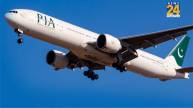On May 21, a Singapore Airlines flight experienced severe turbulence, causing the plane to drop thousands of feet in minutes. One person died, and 30 others were injured. While turbulence is common, some routes are more prone to it. Climate change is expected to increase turbulence risk fourfold by 2050.
A deadly incident on a Singapore Airlines flight highlighted the danger of turbulence, causing one death and multiple injuries. The investigation is ongoing to determine the cause of the 73-year-old British passenger’s death. This incident has reignited concerns about air turbulence, especially on certain risky routes. The increasing impact of climate change could exacerbate these incidents.
What is turbulence, and when does it occur?
Turbulence is a common term in aviation, referring to the irregular motion caused by changes in airflow. It disrupts the steady air that helps planes fly, causing rapid up-and-down movements that passengers can feel even with seat belts on.
There are three main types of turbulence:
- Mild: The plane moves up and down by about 1 metre, often unnoticed by passengers.
- Moderate: The plane jumps 3 to 6 metres, which is easily felt.
- Severe: The plane can move up to 30 metres, posing a risk if seat belts aren’t fastened.
Causes of Turbulence
Turbulence occurs during most flights. Taking off or landing behind another aircraft can cause turbulence due to the air disturbance from the first plane’s engines and wingtips. Strong winds during descent, storms at high altitudes, or nearby aircraft can also cause turbulence.
Clear-air turbulence is particularly difficult to predict, often occurring when warm air moves towards cold air, a phenomenon linked to climate change.
Routes with the Most Accidental chances
Airlines map turbulence patterns to ensure safer travel, using these maps to find alternative routes. Some routes are consistently more turbulent than others. According to Turbli, a turbulence-tracking website, the most turbulent route is between Santiago in Chile and Santa Cruz in Bolivia, followed by the route between Kazakhstan and Kyrgyzstan. Other turbulent routes include Milan to Geneva, Milan to Zurich, and Japan’s domestic routes.
The most turbulent airports are Santiago, Natori, Wellington, Osaka, Bishkek, Tokoname, Tokyo, and Christchurch.
Also Read: Bird Strike Causes Leh-Bound SpiceJet Flight To Return To Delhi, Know What Happened Next
Impact of Global Warming on Air Travel
Climate change and global warming are expected to increase the severity and frequency of air turbulence. A study published in the journal “Advancing Earth and Space Sciences” in June 2023 indicates that turbulence incidents have risen over the past 40 years due to global warming.
Research with Reading University suggests that most incidents will involve Clear-Air Turbulence (CAT), which cannot be predicted. This occurs when different air currents, like cold and hot air, collide. Global warming has increased the occurrence of hot winds, leading to more turbulence.
Increased Accidents on Busy Routes
Researchers have found that CAT incidents are rising on busy routes, particularly along the US and North Atlantic. By 2020, CAT cases had increased by 55% compared to 1979. A 2017 study predicts that clear-air turbulence will quadruple by 2050.













